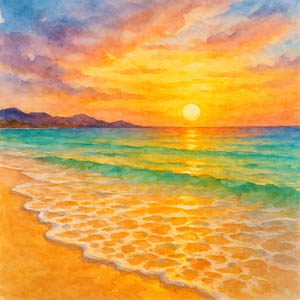— Laurie Anderson
 A frequent visitor to the islands, writer Mark Twain called Hawaii “the most beautiful anchored in any ocean.” On this day in 1959, Hawaii became the 50th state of the United States.
A frequent visitor to the islands, writer Mark Twain called Hawaii “the most beautiful anchored in any ocean.” On this day in 1959, Hawaii became the 50th state of the United States.
"Hawaii is the picture window of the Pacific through which the peoples of the East look into our American front room," said Secretary of the Interior Fred A. Seaton, recognizing Hawaii’s unique strategic location.
Statehood was approved 323–89 by the House of Representatives and 78–16 by the Senate. It was signed into law by President Dwight D. Eisenhower, capping decades of political debate and post–World War II transformation.
“All forty-nine states will join in welcoming the new one—Hawaii—to this Union,” Eisenhower said. “We will wish for her prosperity, security, happiness, and a growing closer relationship with all of the other states.”
Paradise joined the United States, and a 50-star flag waved proudly in celebration.
"The goal was democracy for all," noted Honolulu Star-Bulletin editor A. A. Smyser.
Hawaii was discovered by British explorer Captain James Cook in 1778. The islands' last monarch, Queen Liliʻuokalani, was overthrown in 1893. The U.S. annexed Hawaii in 1898 as a territory. The Aloha State consists of eight major islands: Oʻahu, Hawaiʻi, Maui, Kauaʻi, Molokaʻi, Lānaʻi, Niʻihau, and Kahoʻolawe.
Located 2,400 miles west of San Francisco and 3,850 miles east of Tokyo, Hawaiʻi remains a sacred center of spirit, resilience, and aloha—a reflection of our Hawaiian concept of pono, which speaks of living with integrity, kindness, and deep respect for the land and for one another.
 Paradise begins with peace, purpose, and pono. 🌈
Paradise begins with peace, purpose, and pono. 🌈
